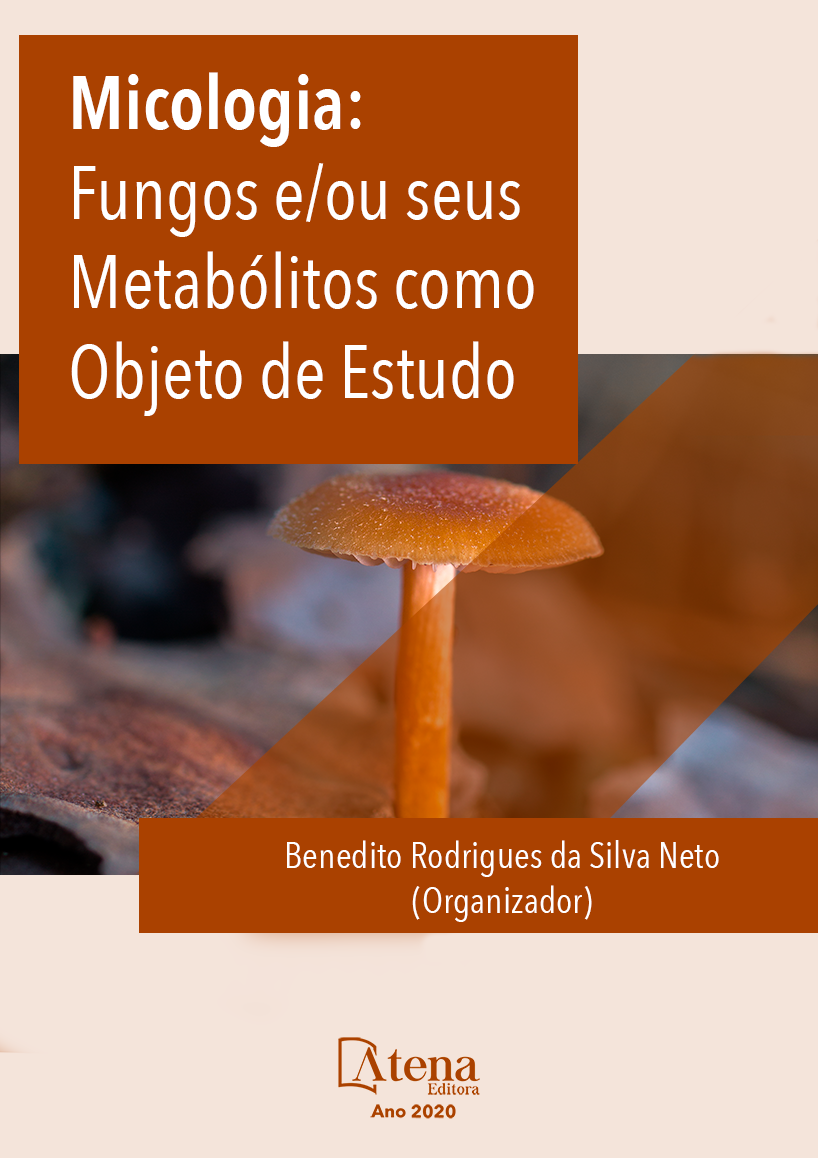
OCORRÊNCIA DE FUNGOS ASSOCIADOS AO TRATO DIGESTIVO DE ABELHAS SEM FERRÃO Melipona seminigra MERRILLAE COCKERELL, 1919
As abelhas sem ferrão são altamente adaptadas e responsáveis pela maior parte da polinização das árvores nativas, grande é a variedade de organismos associados a elas, como vírus, bactérias, leveduras e fungos filamentosos. Estudos já realizados têm relatado o consumo in natura e uso de fungos para enriquecimento e produção alimentar por abelhas sem ferrão, além de outra interação ainda não compreendidas. Desta forma este trabalho teve como objetivo isolar fungos do trato digestivo de abelhas sem ferrão Melipona seminigra merrillae Cockerell, 1919. Foram utilizadas 10 abelhas, coletadas de colmeias artificiais em um Meliponário de Oriximiná-PA, no período de estiagem do ano de 2018. As abelhas coletadas foram transferidas para tubos estéreis, acondicionados sob refrigeração e levadas ao Laboratório Multidisciplinar de Biologia da Universidade Federal do Oeste do Pará (UFOPA), Campus Oriximiná, onde as abelhas foram esterilizadas, dissecadas e transferindo-se a parte anterior do intestino (Foregut), intestino médio (Midgute) e intestino posterior (Hindgut) para tubos contendo solução salina, o plaqueamento posterior da solução em meio SABOURAUD em triplicata, e incubadas a 28 oC para desenvolvimento e isolamento das colônias. Após o desenvolvimento das estruturas fúngicas, foi realizada a identificação morfológica a partir de caracteres macro e microscópicos das culturas em microcultivo sob lamínulas, depositadas sobre lâminas.Neste estudo foram observadas 522 colônias, onde 81 não desenvolveram estruturas reprodutivas e foram consideradas Micélio estéril, 127 desenvolveram estruturas reprodutivas mais não foram o suficiente paraidentificá-las e 314 foram identificadas, distribuídas e 10 gêneros. Destas o gênero Geotrichum (203) foi o mais predominante, seguido de Penicillium (47), Curvularia (17), Cladosporium (16), Fusarium (16), Paecilomyces (5), Aspergillus (3), Colletotrichum (3), Candida (3) e Syncephalastrum (1). Com este trabalho espera-se conhecer um pouco da biota fúngica do trato digestivo dessas abelhas sem ferrão, e a possibilidade da descoberta de novas espécies de fungos.
OCORRÊNCIA DE FUNGOS ASSOCIADOS AO TRATO DIGESTIVO DE ABELHAS SEM FERRÃO Melipona seminigra MERRILLAE COCKERELL, 1919
-
DOI: 10.22533/at.ed.61920020713
-
Palavras-chave: Abelhas sem ferrão, intestino e fungos
-
Keywords: Stingless bees, intestine and fungi
-
Abstract:
Stingless bees are highly adapted and responsible for the greater pollination of native trees, the variety of organisms associated with them, such as viruses, bacteria, yeasts and filamentous fungi, is great. Studies already carried out have reported consumption in natura and use of fungi for enrichment and food production by stingless bees, in addition to another interaction not yet understood. In this way, this work aimed to isolate fungi from the digestive tract of stingless bees Melipona seminigra merrillae Cockerell, 1919. Ten bees were used, collected from artificial hives in a Meliponário in Oriximiná-PA, in the drought period of the year 2018. The collected bees were transferred to sterile tubes, packed under refrigeration and taken to the Multidisciplinary Biology Laboratory of the Federal University of Western Pará (UFOPA), Campus Oriximiná, where the bees were sterilized, dissected and the anterior part of the foregut was transferred, midgute and hindgut for tubes containing saline solution, the posterior plating of the solution in SABOURAUD medium was performed in triplicate, and incubated at 28 oC for development and isolation of colonies. After the development of fungal structures, morphological identification was performed from macro and microscopic characters of cultures in microcultures under coverslips, deposited on slides. In this study, 522 colonies were observed, where 81 did not develop reproductive structures and were considered sterile Mycelium, 127 they developed reproductive structures but were not enough to identify them and 314 were identified, distributed and 10 genera. Of these, the genus Geotrichum (203) foi o mais predominante, seguido de Penicillium (47), Curvularia (17), Cladosporium (16), Fusarium (16), Paecilomyces (5), Aspergillus (3), Colletotrichum (3), Candida (3) e Syncephalastrum (1). With this work it is expected to know a little about the fungal biota of the digestive tract of these stingless bees, and the possibility of discovering new species of fungi.
-
Número de páginas: 9
- JOÃO RAIMUNDO SILVA DE SOUZA
- MELQUIADES DE OLIVEIRA COSTA
- MARIA IVONE LOPES DA SILVA
- CARLOS GUSTAVO NUNES DA SILVA
- João Raimundo Silva de Souza


